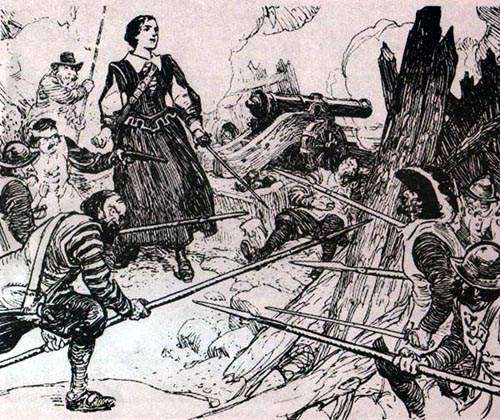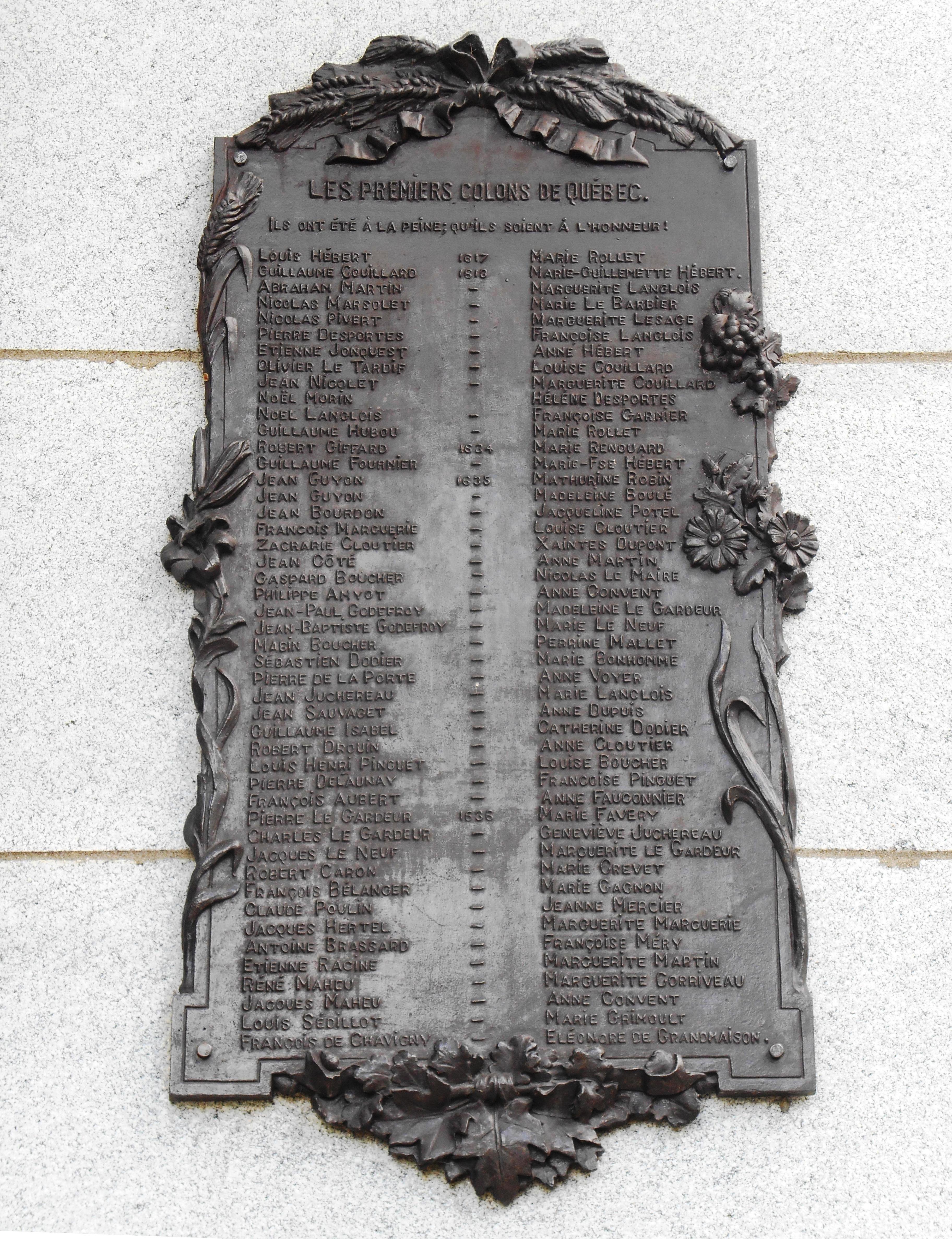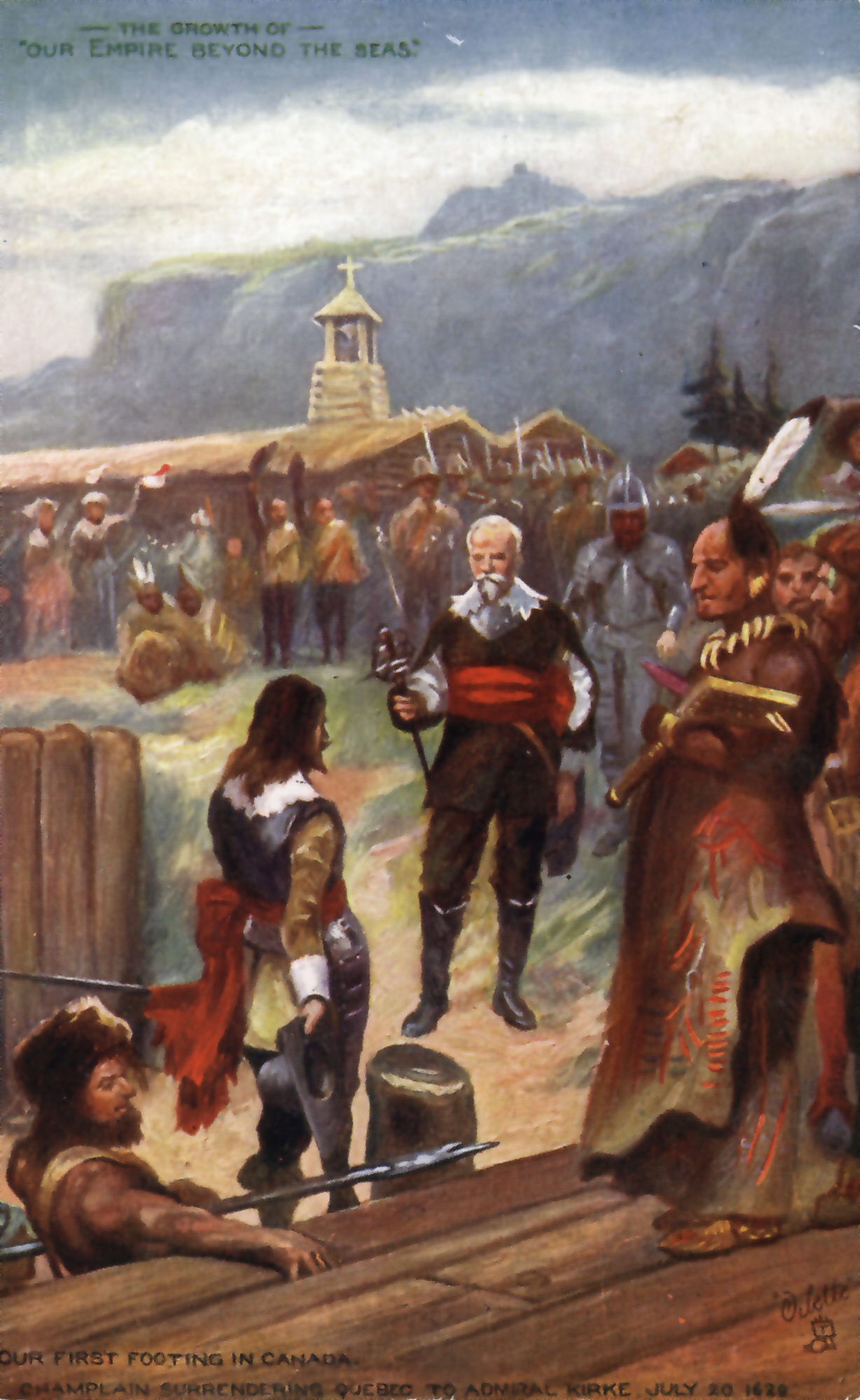|
Port La Tour, Nova Scotia
Port La Tour is a community in the Canada, Canadian province of Nova Scotia, located in the Municipality of the District of Barrington of Shelburne County, Nova Scotia, Shelburne County. The Historic Sites and Monuments Board of Canada asserts that Fort St. Louis (Shelburne County, Nova Scotia), Fort Saint Louis is located at Port La Tour, although this has been disputed. It has also been claimed that the fort at Port La Tour was Fort Lomeron (also known as Fort La Tour) and that Fort St. Louis was located at the neighbouring community of Villagedale, Nova Scotia. French Colony Cape Sable and Eel Bay, Nova Scotia were first settled by the Acadians who migrated from Port-Royal (Acadia), Port Royal in 1620. The French governor of Acadia, Charles de Saint-Étienne de la Tour, Charles de la Tour, colonized Cap de Sable giving it the present name, meaning Sandy Cape. La Tour built up a strong post at Cap de Sable (present-day Port La Tour, Nova Scotia) beginning in 1623, called Fort ... [...More Info...] [...Related Items...] OR: [Wikipedia] [Google] [Baidu] |
List Of Communities In Nova Scotia
This is a list of communities in the Provinces and territories of Canada, Canadian province of Nova Scotia. For the purposes of this list, a community is defined as an unincorporated area, unincorporated settlement inside or outside a municipality. A *Abbots Dyke, Nova Scotia, Abbots Dyke *Abercrombie, Nova Scotia, Abercrombie *Acaciaville, Nova Scotia, Acaciaville *Admiral Rock, Nova Scotia, Admiral Rock *Advocate Harbour, Nova Scotia, Advocate Harbour *Africville, Nova Scotia, Africville *Afton, Nova Scotia, Afton *Alder River, Nova Scotia, Alder River *Aldershot, Nova Scotia, Aldershot *Alma, Nova Scotia, Alma *Anderson Mountain, Nova Scotia, Anderson Mountain *Ardness, Nova Scotia, Ardness *Argyle Guysborough County, Nova Scotia, Argyle (Guysborough) *Argyle, Yarmouth County Nova Scotia, Argyle (Yarmouth) *Argyle Sound, Nova Scotia, Argyle Sound *Arichat, Nova Scotia, Arichat *Arisaig, Nova Scotia, Arisaig *Arlington, Nova Scotia, Arlington *Aspen, Nova Scotia, Aspen *Atlan ... [...More Info...] [...Related Items...] OR: [Wikipedia] [Google] [Baidu] |
Port-Royal (Acadia)
Port Royal (1605–1713) was a historic settlement based around the upper Annapolis Basin in Nova Scotia, Canada, and the predecessor of the modern town of Annapolis Royal. It was the first successful attempt by Europeans to establish a permanent settlement in what is today known as Canada. Port Royal was a key step in the development of New France and was the first permanent base of operations of the explorer Samuel de Champlain, who would later found Quebec City, Quebec in 1608, and the farmer Louis Hébert, who would resettle at Quebec in 1617. For most of its existence, it was the capital of the New France colony of Acadia. Over 108 years control would pass between France, Scotland, England and Great Britain until it was formally ceded to Great Britain in 1713 due to the Treaty of Utrecht. From 1605 to 1613 the settlement was centred around the habitation on the north side of the Annapolis Basin, while from 1629 onwards it was centred around Fort Anne on the south side, ... [...More Info...] [...Related Items...] OR: [Wikipedia] [Google] [Baidu] |
Charles De Menou D'Aulnay
Charles de Menou d'Aulnay (''de Charnisay'') (–1650) was a French pioneer of European settlement in North America and Governor of Acadia (1635–1650). D'Aulnay was a member of the French nobility who was at various times a sea captain, a lieutenant in the French navy (under leadership of his cousin Isaac de Razilly), and Governor of Acadia (now primarily Nova Scotia and New Brunswick, Canada). Biography D'Aulnay was born at Château de Charnizay, Touraine, France. His father was a high-ranking official for Louis XIII. He came to serve as assistant to the governors and eventually lieutenant governor of Acadia. Acadia under Razilly In 1632, Isaac de Razilly became governor of Acadia, having been selected by the government to restore to France her Acadian possessions. D'Aulnay, serving as one of the governor's able assistants, helped to borrow funds, hire ships, and recruit men for the regular ocean crossings to and from France for the Compagnie des Cent-Associés and a pri ... [...More Info...] [...Related Items...] OR: [Wikipedia] [Google] [Baidu] |
Castine, Maine
Castine ( ) is a town in Hancock County in eastern Maine, United States.; John Faragher. ''Great and Nobel Scheme''. 2005. p. 68. The population was 1,320 at the 2020 census. Castine is the home of Maine Maritime Academy, a four-year institution that graduates officers and engineers for the United States Merchant Marine and marine related industries. Called Majabigwaduce by Tarrantine Abenaki Indians, Castine is one of the oldest towns in New England, predating the Plymouth Colony by seven years. Situated on Penobscot Bay, it is near the site of historic Fort Pentagouet. Few places in New England have had a more tumultuous history than Castine, which proclaims itself the "battle line of four nations." During the French colonial period of the 17th and early 18th century, Castine was the southern tip of Acadia, with New France defining the Kennebec River as the southern boundary of Acadia. The town is named after Jean-Vincent d'Abbadie de Saint-Castin. History Its comman ... [...More Info...] [...Related Items...] OR: [Wikipedia] [Google] [Baidu] |
Saint John, New Brunswick
Saint John () is a port#seaport, seaport city located on the Bay of Fundy in the province of New Brunswick, Canada. It is Canada's oldest Municipal corporation, incorporated city, established by royal charter on May 18, 1785, during the reign of George III. The Port of Saint John is Canada's third-largest by tonnage with a cargo base that includes dry and liquid bulk, Breakbulk cargo, break bulk, containers, and cruise. The city has a strong industrial base, including oil refining and manufacturing, matched with finance and tourism sectors and research institutions such as the New Brunswick Museum and the University of New Brunswick. Saint John was the most populous in New Brunswick until the 2016 Canadian census, 2016 census, when it was overtaken by Moncton. It is currently the second-largest city in the province, with a population of 69,895 over an area of . French explorer Samuel de Champlain landed at Saint John Harbour on June 24, 1604, the feast of St. John the Baptist, ... [...More Info...] [...Related Items...] OR: [Wikipedia] [Google] [Baidu] |
Treaty Of Saint-Germain-en-Laye (1632)
The Treaty of Saint-Germain-en-Laye was signed on March 29, 1632. It returned New France (Quebec, Acadia and Cape Breton Island) to French control after the English had seized it in 1629,"KIRKE, SIR DAVID, adventurer, trader, colonizer, leader of the expedition that captured Quebec in 1629, and later governor of Newfoundland" ''Dictionary of Canadian Biography Online'' after the Anglo-French War (1627–1629) had ended. On 19 July 1629, an English fleet under the command of David Kirke managed to cause the surrender of Quebec by intercepting its supplies, which effectively reduced Samuel de Champlain and his men to starvation.David Dobson, 'Seventeenth Centu ... [...More Info...] [...Related Items...] OR: [Wikipedia] [Google] [Baidu] |
William Alexander, 1st Earl Of Stirling
William Alexander, 1st Earl of Stirling PC (c. 156712 February 1640) was a Scottish courtier and poet who was involved in the Scottish colonisation of Charles Fort, later Port-Royal, Nova Scotia in 1629 and Long Island, New York. His literary works include ''Aurora'' (1604), ''The Monarchick Tragedies'' (1604) and ''Doomes-Day'' (1614, 1637). Biography Early life William Alexander was the son of Alexander of Menstrie and Marion, daughter of an Allan Couttie. He was born at Menstrie Castle, near Stirling. The family was old and claimed to be descended from Somerled, Lord of the Isles, through John of Islay. Because his father died in 1580, and William was entrusted to the care of his great-uncle James in Stirling, he was probably educated at Stirling grammar school. There is a tradition that he was at the University of Glasgow; and, according to his friend the poet William Drummond of Hawthornden, he was a student at Leiden University. As a young man, William became tu ... [...More Info...] [...Related Items...] OR: [Wikipedia] [Google] [Baidu] |
Baleine, Nova Scotia
Baleine ( ) (formerly Port aux Baleines) is a community in the Canadian province of Nova Scotia, located in the Cape Breton Regional Municipality on Cape Breton Island. The community is perhaps best known as the landing site for pilot Beryl Markham's record flight across the Atlantic Ocean. History Sir Robert Gordon of Lochinvar was one of the first to set out to establish Scottish colonies in America. On 8 November 1621 he obtained a royal charter of what was called the barony of Galloway in Nova Scotia, and in 1625 he published a tract on the subject. "Encouragements for such as shall have intention to bee Vndertakers in the new plantation...By mee Lochinvar...Edinburgh, 1625". Meanwhile, William Alexander, 1st Earl of Stirling, established the first incarnation of "New Scotland" at Port Royal.Nichols, 2010. p. xix During the Anglo-French War (1627–1629), in the time of Charles I, by 1629 the Kirkes had taken Quebec City. On 1 July 1629, seventy Scots, led by Jame ... [...More Info...] [...Related Items...] OR: [Wikipedia] [Google] [Baidu] |
Cape Breton Island
Cape Breton Island (, formerly '; or '; ) is a rugged and irregularly shaped island on the Atlantic coast of North America and part of the province of Nova Scotia, Canada. The island accounts for 18.7% of Nova Scotia's total area. Although the island is physically separated from the Nova Scotia peninsula by the Strait of Canso, the long Canso Causeway connects it to mainland Nova Scotia. The island is east-northeast of the mainland with its northern and western coasts fronting on the Gulf of Saint Lawrence with its western coast forming the eastern limits of the Northumberland Strait. The eastern and southern coasts front the Atlantic Ocean with its eastern coast also forming the western limits of the Cabot Strait. Its landmass slopes upward from south to north, culminating in the Cape Breton Highlands, highlands of its northern cape. A large body of saltwater, the ("Golden Arm" in French), dominates the island's centre. The total population at the 2016 Canadian Census, 20 ... [...More Info...] [...Related Items...] OR: [Wikipedia] [Google] [Baidu] |
Lord Ochiltree
Lord Ochiltree (or Ochiltrie) of Lord Stuart of Ochiltree was a title in the Peerage of Scotland. In 1542 Andrew Stewart, 2nd Lord Avondale (see the Earl Castle Stewart for earlier history of the family) exchanged the lordship of Avondale with Sir James Hamilton for the lordship of Ochiltrie and by an act of Parliament, the (c. 5), was ordained to be styled Lord Stuart of Ochiltrie. His great-grandson, the third Lord Stuart of Ochiltrie, resigned the feudal barony of Ochiltree and the peerage to his cousin, James Stewart, with the consent of the Crown in 1615. In 1619 he was instead elevated to the Peerage of Ireland as Baron Castle Stewart; see the Earl Castle Stewart for further history of this branch of the family. James Stewart now became the first or fourth Lord Ochiltrie (or Lord Stewart of Ochiltrie). He was succeeded by his son William, the second or sixth Lord. On his early death in 1675 the lordship became either dormant or extinct. In 1774 Andrew Thomas Stewart su ... [...More Info...] [...Related Items...] OR: [Wikipedia] [Google] [Baidu] |
Quebec City
Quebec City is the capital city of the Provinces and territories of Canada, Canadian province of Quebec. As of July 2021, the city had a population of 549,459, and the Census Metropolitan Area (including surrounding communities) had a population of 839,311. It is the twelfthList of the largest municipalities in Canada by population, -largest city and the seventh-List of census metropolitan areas and agglomerations in Canada, largest metropolitan area in Canada. It is also the List of towns in Quebec, second-largest city in the province, after Montreal. It has a humid continental climate with warm summers coupled with cold and snowy winters. Explorer Samuel de Champlain founded a French settlement here in 1608, and adopted the Algonquin name. Quebec City is one of the List of North American cities by year of foundation, oldest European settlements in North America. The Ramparts of Quebec City, ramparts surrounding Old Quebec () are the only fortified city walls remaining in the ... [...More Info...] [...Related Items...] OR: [Wikipedia] [Google] [Baidu] |
David Kirke
Sir David Kirke ( – ) was an English privateer and colonial administrator who served as the Governor of Newfoundland from 1638 to 1651. He is best known for capturing Québec from the French in 1629 during the Anglo-French War. A favourite of Charles I of England, Kirke's downfall came in 1651 when he was arrested after being accused of withholding taxes collected on behalf of the English government. Kirke was sent back to England, where he reportedly died in prison. Early life Kirke was a son of Gervase (Jarvis) Kirke, a rich merchant of the City of London, and Elizabeth Goudon, a French Huguenot woman. He was raised in Dieppe, in Normandy. Also David was the eldest of five sons, followed by Lewis, Thomas, John and James. While still in England, David married to Sara Kirke. They left for Newfoundland in 1638 and had a number of children, including their sons George, David the Younger, and Phillip. Quebec campaign An English fleet, consisting of six warships and three ... [...More Info...] [...Related Items...] OR: [Wikipedia] [Google] [Baidu] |




